Mopar® Performance: It All Started Here!
– Famous Max Wedge engine came in ’62: 413 cubes, up to 420 horsepower
– Plain Jane Savoy 2-door post a true sleeper
– This rare example a factory-equipped manual transmission car
1962 was a pivotal year for the Chrysler Corporation as that was the year that Dodge and Plymouth B-body (intermediate sized) cars became contenders as bona fide performance machines. Chrysler Corporation vehicles had a solid reputation at the time as being well-engineered, reliable cars. They featured torsion-bar front suspension with semi-elliptic leaf springs on the rear and rugged drivetrains.
The formula for creating a fast production passenger car revolved around a lightweight body and a high-horsepower engine. Great news came in1962, as the newly released B-bodies were reduced in size and were lighter than previous models, and they now featured full unibody construction. Starting in May of 1962, a newly designed “Maximum Performance” 413-cid V8 powerplant was released and made available to buyers, boosting the most power output ever offered by the automaker. (This article focuses on the Plymouth Savoy, while the Dart 330 was the Dodge equivalent.)
STYLING FOR 1962
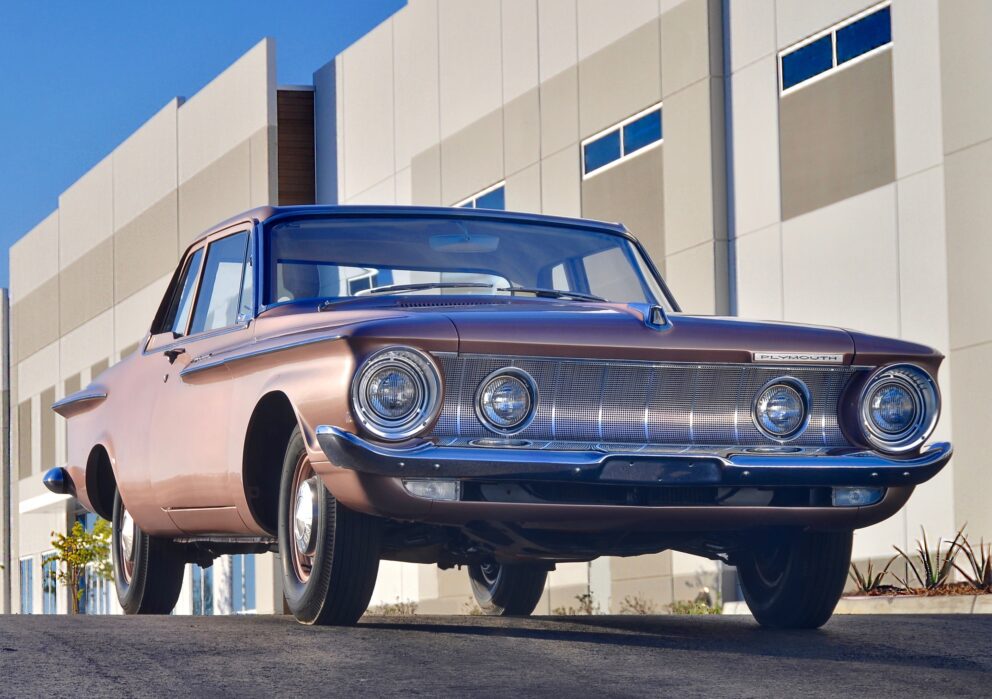
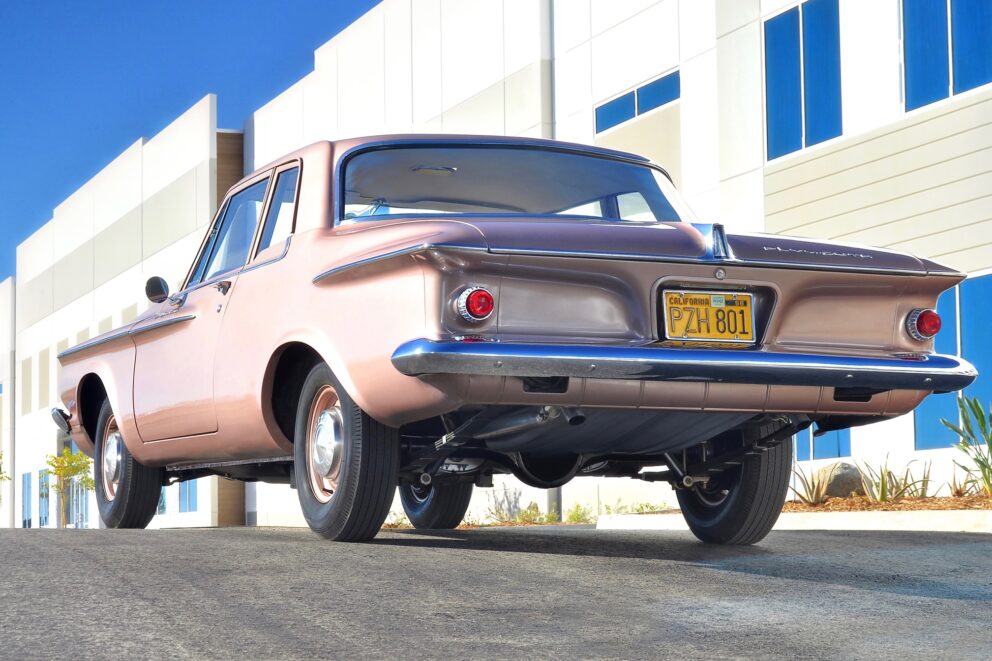
Automotive historians have described the 1962 B-body cars as “odd-shaped” and “clumsy-looking” as well as “hideous” among other things, usually revolving around the theme of “ugly.” There’s a story behind the unusual styling of these cars, and the reason for the proportions of the body shapes. The way the story goes, during the time frame that Virgil Exner (who was the VP of Design at Chrysler) was finalizing the new line of 1962 cars, which were to be large, full-sized vehicles, there was a sudden and totally unexpected new order from the front office.
The order for change came from William C. Newberg, who was the new President of Chrysler. Legend has it that, while at a garden cocktail party where GM boss Ed Cole was attending, Newberg had overheard something that he felt was of upmost importance. Newberg had heard that “Chevrolet was downsizing” as a result of Cole saying, to someone else, that the new Chevy for 1962 was going to be on a shorter wheelbase and be smaller overall. With a panic and immediate reaction, Newberg decreed to Exner that the upcoming new models needed to be made smaller to “keep up” with Chevrolet. Exner fought it, but had to have his team work 24-hour shifts and seven days a week to get the new, downsized cars ready for production on time.
Once the line of 1962 Chevrolets were released, it was then learned that during the day of the garden party, Ed Cole was actually talking about the new “Chevy II” model, and not the full-sized Chevy cars, which continued on as a large car. There was quite a misinterpretation of the Ed Cole comment! (Newberg was only Chrysler president for 64 days and the reason was for accusations of wrong-doings, a scandal about gaining personal profits of nearly half a million dollars from ownership of two of Chrysler’s parts suppliers.)
“SUPER STOCK” 413 MAX WEDGE
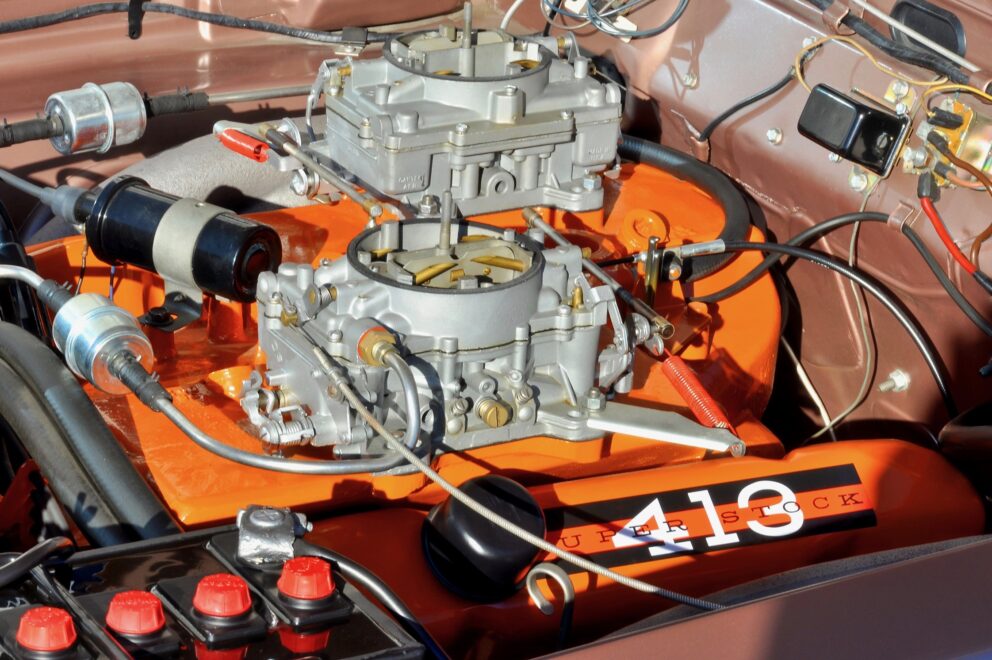
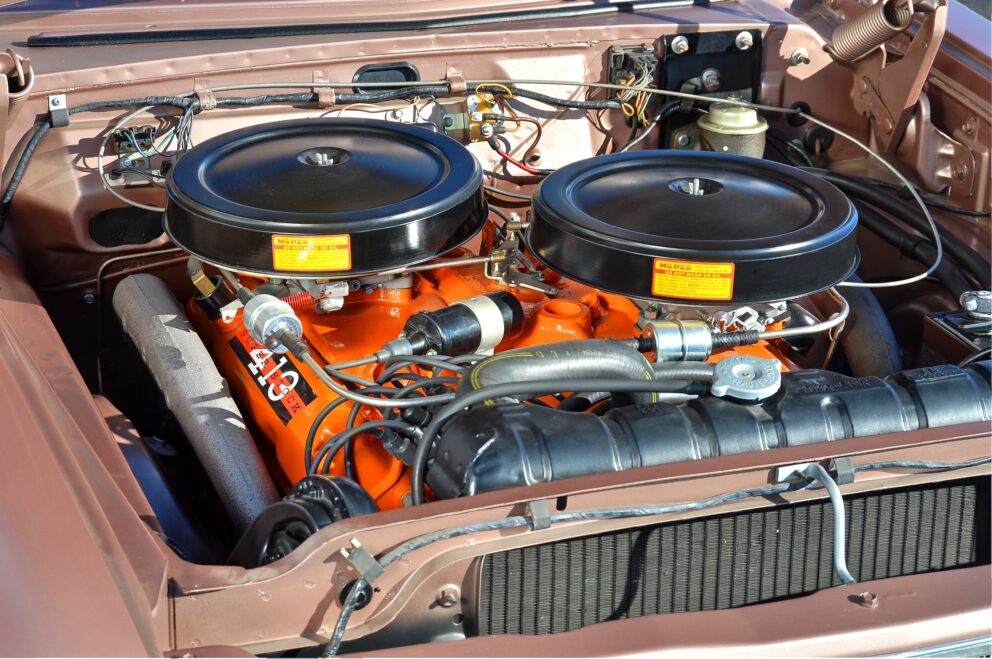
Even though the downsized B-bodies did not sell well, the fact that they were lighter than the competition meant these “ugly ducklings” were well-received by drag racers and street performance enthusiasts alike. While the general public did not embrace the styling, in the big picture, these cars did a lot in changing the overall image of the company, all because of (what it would become know as) the “Max Wedge” engine and its impressive performance.
This high-performance version of the 413 engine for 1962 came as a result of a conversation between the new Chrysler Corporation president Lynn Townsend and his teenaged boys, who were very tuned-in to the scene on Detroit’s Woodward Avenue. When queried, the boys had told their father that Dodges and Plymouths were not part of the action, that they had no presence at all.
Townsend then called to the Engineering Department, a man named Tom Hoover answered the phone, and after learning that there would be full support from the top (as well as a budget), work soon began on upgrading the existing 413-cid Chrysler engine (also used for truck and marine applications) for all-out drag racing use. It was 1961 and by May of 1962, the Maximum Performance 413 was available in limited numbers.
To create this extreme 413, the Chrysler engineers were lead by Tom Hoover (who was a graduate of the Chrysler Institute, had a master’s degree in physics and was a founding member of the late 1950s Ramchargers drag race club). Numerous internal changes were done to the Chrysler 413 engine (which was known as the RB engine, for “Raised B-block” and it had a taller block height as compared to the 361/383-cid “B” engine). It was the largest cubic-inch displacement the corporation had at the time and was equipped with “wedge”-shaped combustion chambers.
The ingredients of the engine that Hoover and the staff put together was rather exotic. The basic block was from the truck division (stronger with more nickel content) and it had a forged crankshaft with flame-hardened journals, along with tri-metal, hardened bearings. Forged-steel I-beam connecting rods (Magna-fluxed), fitted with 11.0:1 ratio extruded aluminum domed pistons, and mechanical camshaft with .500-inch lift, 300-degrees of duration. A special baffled oil pan was used, unique to these Maximum Performance engines, as well as a high-volume oil pump.
Breathing was enhanced via a set of significantly modified cylinder head castings that featured 81cc combustion chambers with enlarged intake and exhaust ports, featuring 25-percent more flowing capacity as compared to standard 413 heads. 2.08-inch intake valves were used, and these were tulip faced for increased port flow. The exhaust valves were enlarged a quarter-inch (1.88 inch) and that required notching the tops of the cylinder bores on the block for clearance.
Special high-strength valve spring retainers were used along with dual high-load valve springs, which were rated at withstanding 6,500 rpm on test fixtures prior to engine assembly. Heavy-duty pushrods were used and cast malleable-iron adjustable rocker arms came as standard equipment on these engines. The heads attached to the block with heat-resistant stainless steel head gaskets.
A specially designed intake manifold was developed for the engine and it featured 15-inch-long runners for optimum high rpm efficiency, with the carburetors located in a staggered position, a “cross-ram” layout. It was done as a one-piece cast aluminum piece and the Carter AFB four-barrel carburetors were located mounted at a 90-degree position different from a traditional manifold configuration. A higher-capacity mechanical fuel pump fed the fuel to the carbs (525 cfm each). High-octane premium fuel was mandatory.
There was special attention given to the design of streamlined exhaust manifolds, and they were upswept with large internal passages, exiting to three-inch diameter header pipes. Other details of these Max Wedge powerplants include a double-breaker distributor, special low-power absorption water pump and deep-groove pulleys. These potent engines, when placed into the lightweight 1962 cars, were hard to beat on the drag strip, especially when racers were able to fine-tune them and add larger rear slick tires for traction.
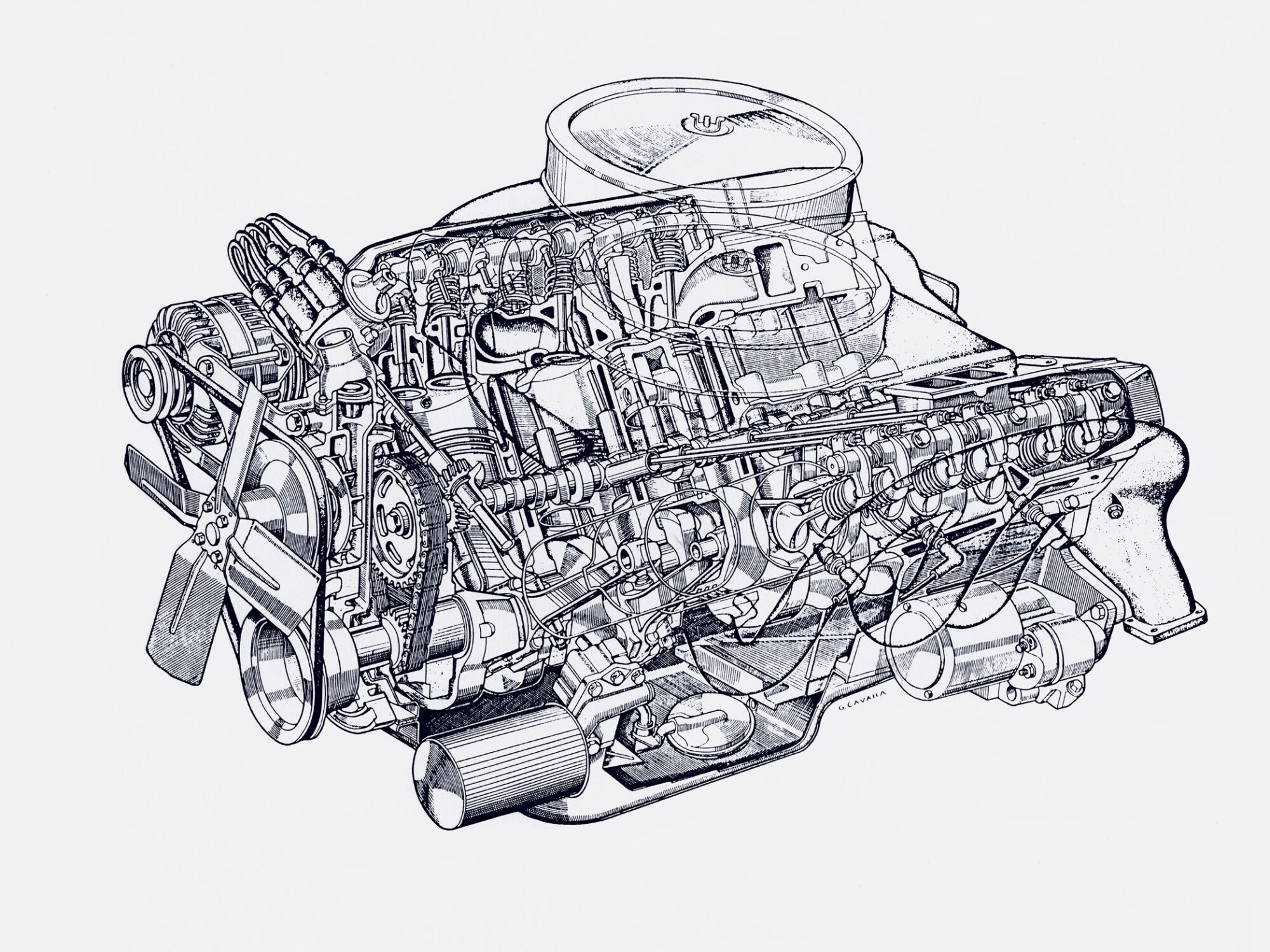
Hot Rod Magazine‘s Ray Brock ran a fantastic 12.37 elapsed time in a 1962 413 Plymouth, at a terminal speed of 114.79 mph in the quarter-mile. A more seriously prepared drag car from Tom Grove, with his ’62 Plymouth “Melrose Missile” 413 car, ran the first official sub-12-second run by a full-sized passenger car (equipped with a factory optional engine) when he stopped the clocks with a 11.93-second run at 118.57 mph. Maximum Performance 413 cars were a force to be reckoned with on the street and the drag strip.
There were two transmissions available for 413 Maximum Performance buyers, the three-speed manual and the three-speed automatic. At the time, Chrysler did not have a four-speed gearbox on their option list, so a heavy-duty Borg-Warner T-85 three-speed (with 2.09:1 low gear, 1.44:1 second) manual had to suffice, incorporating an aluminum clutch housing with floor shift. A 10.5-inch diameter heavy-duty clutch, fitted with high-speed clutch disc was used in conjunction with a pearlitic malleable-iron pressure plate.
For 1962, the TorqueFlite® automatic transmission (then called the A727, replacing the previous A488) had a design change, now including a one-piece aluminum case (which reduced weight by 60 pounds) with upgrades that included high-friction-coefficient clutches and kick-down bands, revised servo return springs, plus the hydraulics were recalibrated for increased line pressure (resulting in higher shift points). Push-button gear shifting made for precise, quick manual shifting (gear ratios: 2.45:1 low, 1.45:1 second) and now the driver could have full manual control.
All Max Wedge cars came with heavy-duty driveshafts that were selected for minimum run-out and optimum balance, the rear end was the 8 3/4-inch diameter pumpkin-type differential, Sure-Grip, with standard gearing of 3.91:1. (Seven other axle ratios were available for dealer installation, including dragstrip-only 4.89:1.) Heavy-duty six-leaf springs were fitted, as were heavy-duty shock absorbers. A pinion bumper was used, and recommended to be adjusted to contact the floor pan at ride height.
The Maximum Performance Package could be ordered with any B-body except for station wagons. For all-out track use only, a run of cars with 13.5:1 compression pistons and came with a warning not to run at open throttle for more than 15 seconds at a time. These engines were rated at 420 horsepower at 5,400 rpm, and came at an additional cost of $67 over and above the $545 manual, $615 automatic, price of the Max Wedge package.
The manual transmission was a 3-speed Borg-Warner T-85 unit with 2.09:1 low gear, and it was strong enough to handle the brute power of the Maximum Performance engine.
In all cases, the manual transmission cars were the rarest, as word had spread quickly that the 3-speed TorqueFlite automatic transmissions were actually quicker on the drag strip and also were considered “bulletproof” in strength. In addition, the use of an automatic transmission on the drag strip offered better run-to-run consistency in elapsed time.
SLEEPER
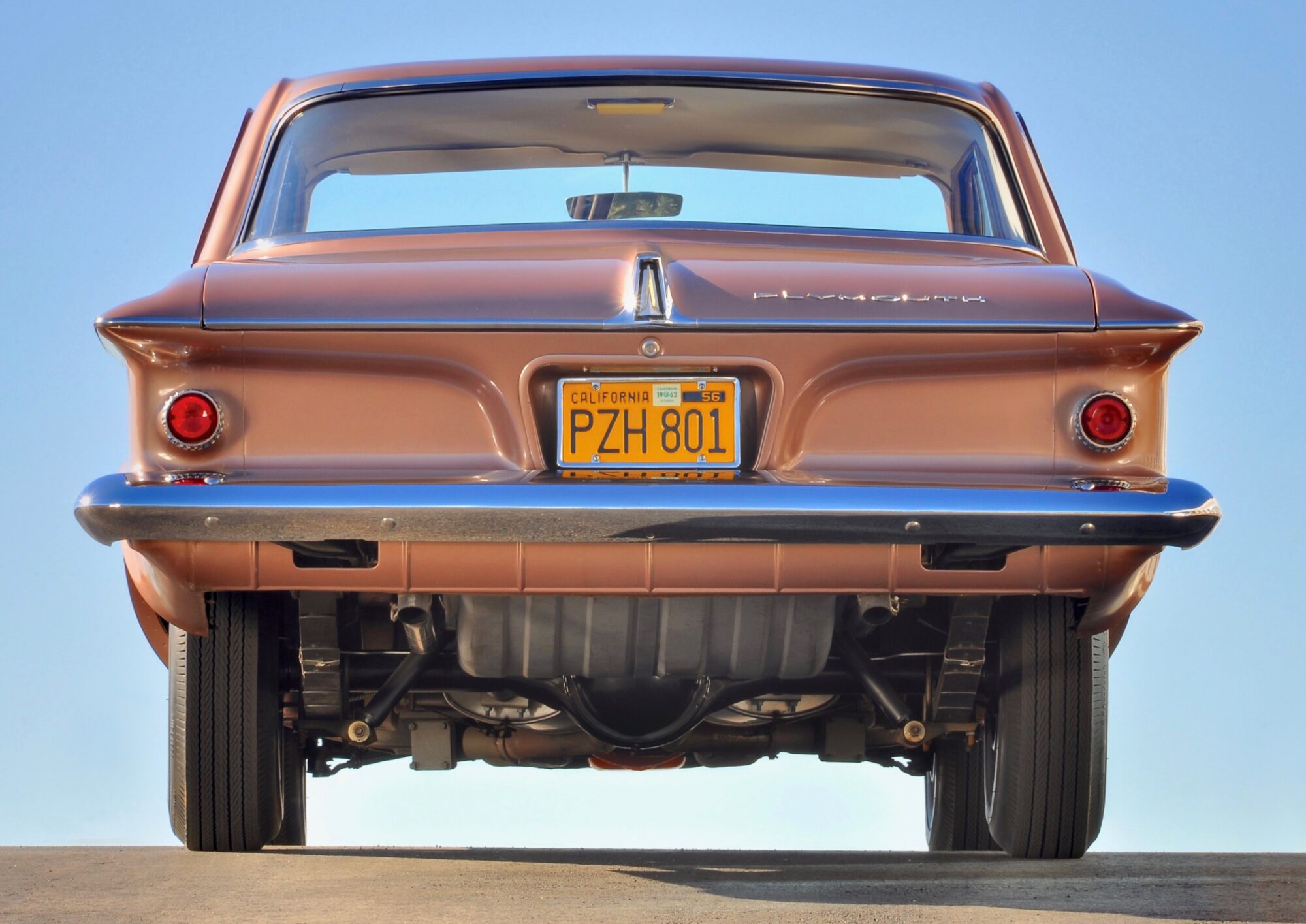
The Savoy for 1963 was the bargain car in the Plymouth intermediate line with a base price of $2,206 for the 2-door sedan with standard six-cylinder engine. The base V8 version was $107 more, and as pictured, one ordered with the Maximum Performance 413 engine package added $545 to the window sticker price, and was well worth it for horsepower-hungry buyers. There were no outside markings on the car that told of its powerful engine.
A trained eye from the rear on a Maximum Performance car will spot the dual exhaust pipes, plus closer inspection shows the 4-bolt exhaust cutouts that provide unrestricted exhaust when removed. As this car is restored to “as delivered from the factory” conditions, it has the standard 4.5-inch wide rubber, which was totally inadequate to handle the high-horsepower of the engine. Drag racers typically replaced them with 7-inch wide x 28.5-inch diameter “cheater slicks” on wider wheels.
STRICTLY BUSINESS INTERIOR
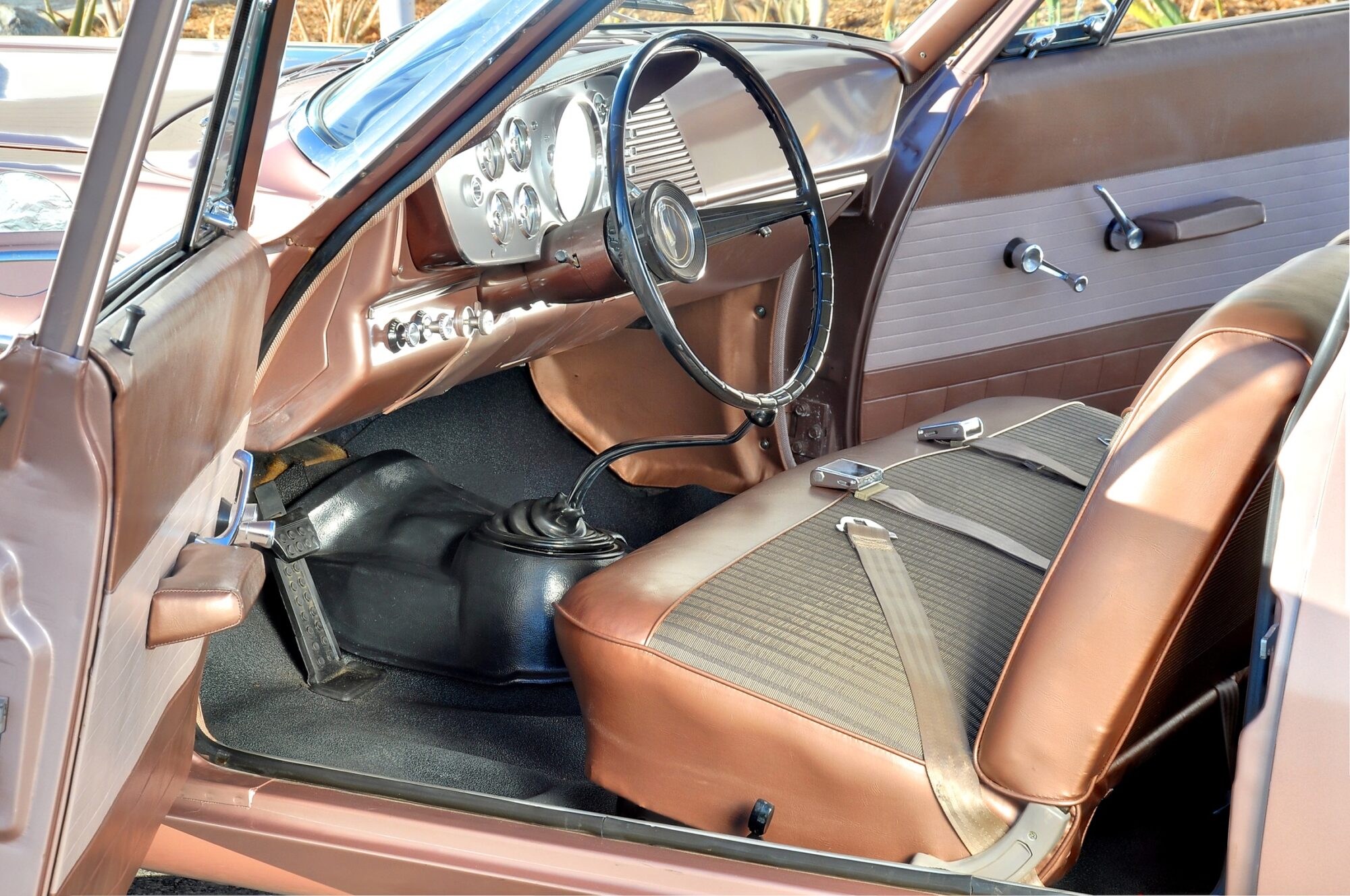
Because this is a bare-bones car, there’s rubber flooring instead of carpeting. Seat belts were a $19.00 option. One of the unique features of the 1962 manual transmission Maximum Performance cars is the shifter cover panel that attaches to the tunnel over the transmission.
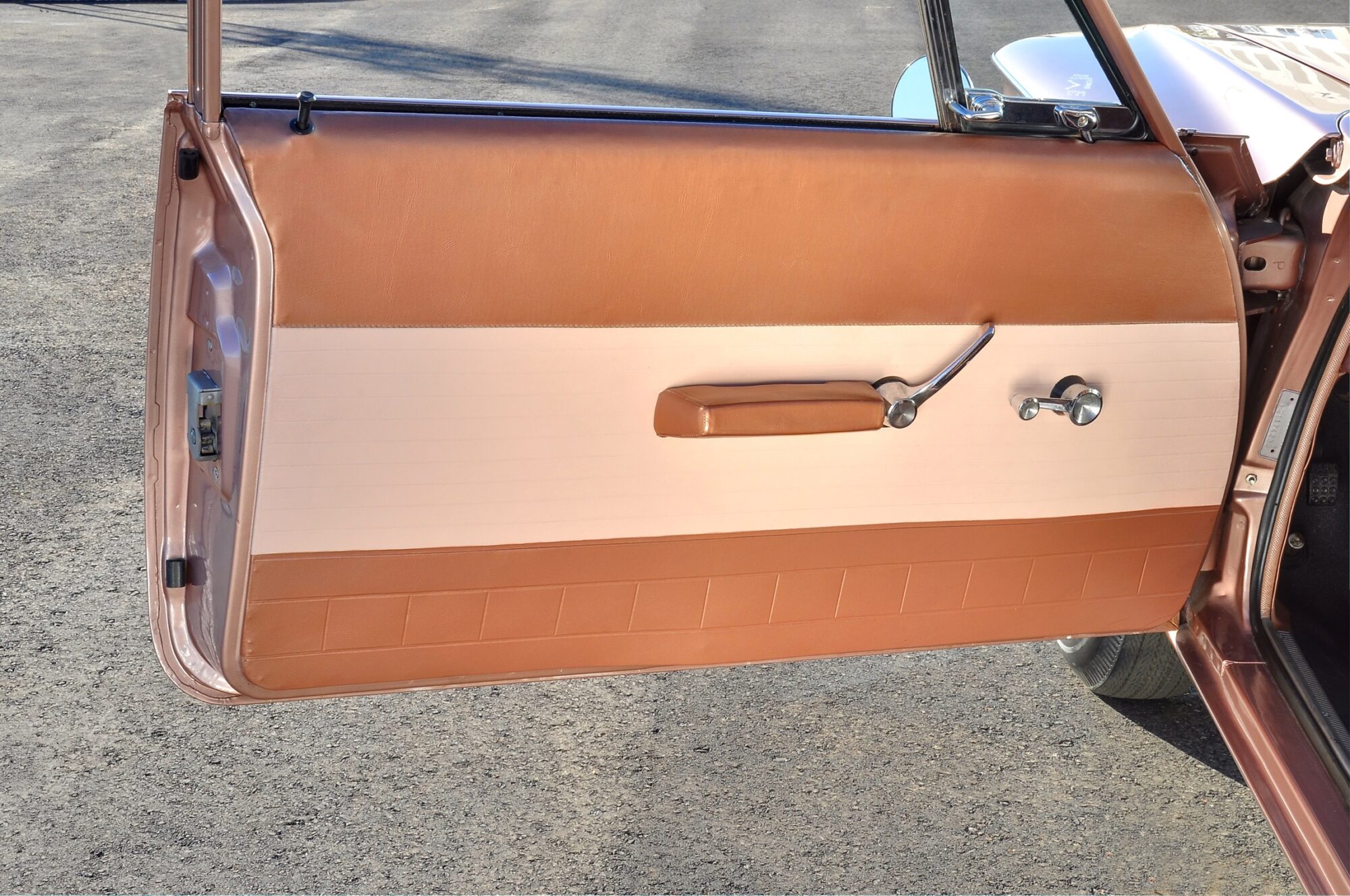
Interior upholstery, including door panels, were faithfully reproduced using original factory colors and patterns.
ALL ABOUT THE DETAILS
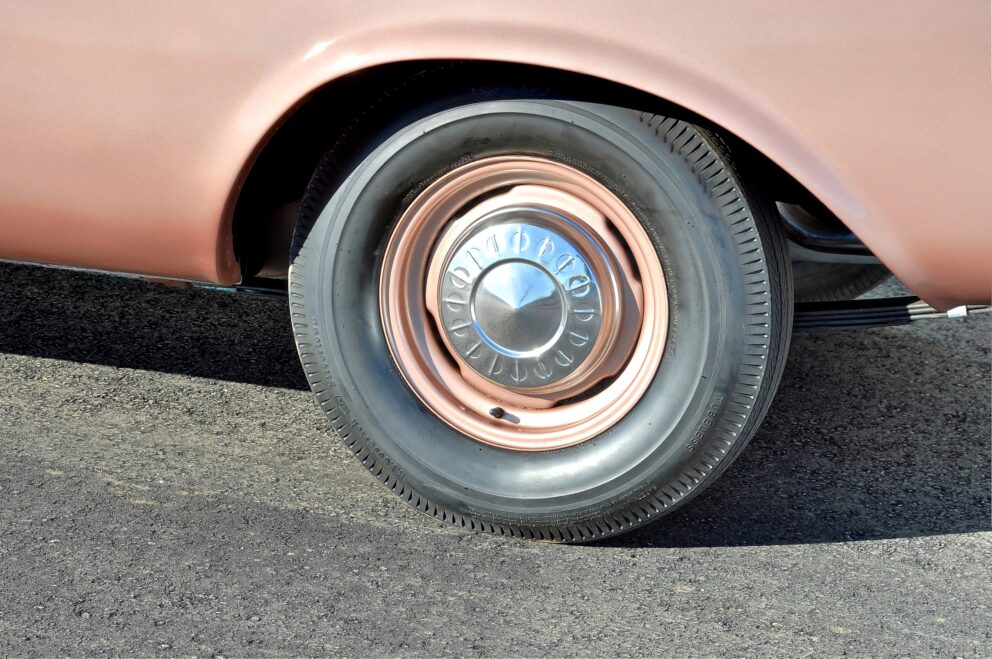
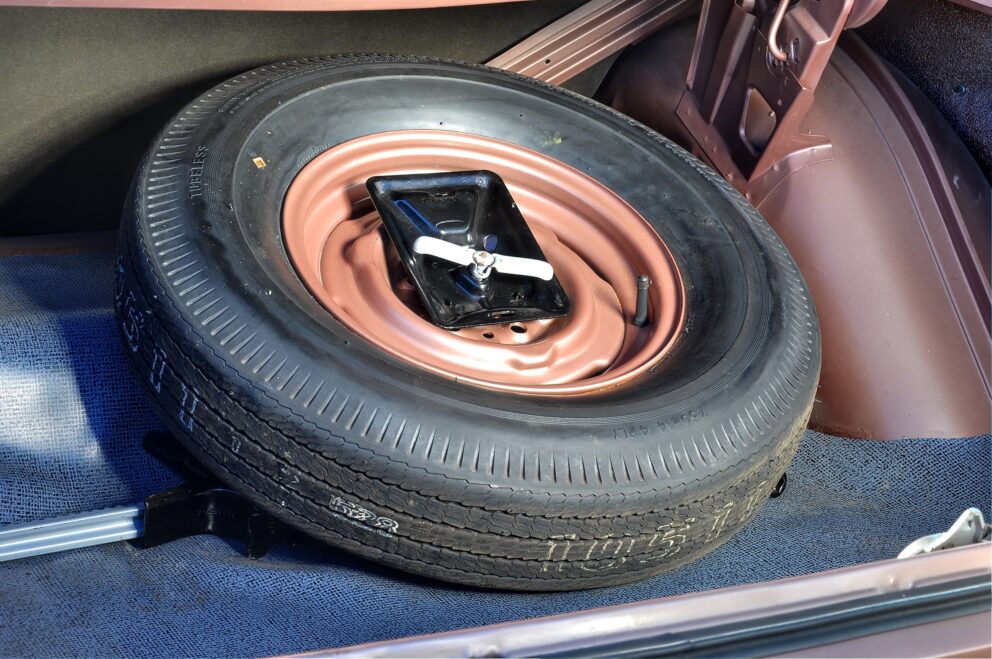
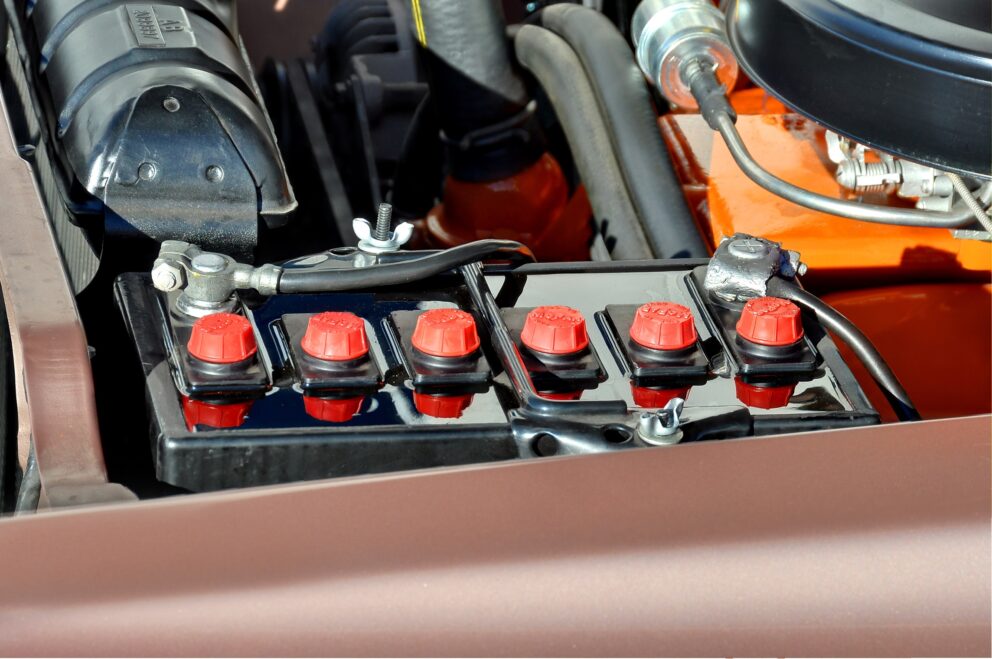

“Dog dish” standard hubcaps mounted on 14 x 5.5-inch steel wheels, wrapped with 7.50-14 4-ply rayon tires, just as they were fitted as it rolled off the Lynch Road, Michigan, assembly line. Body-color wheel and correct-size spare tire with standard bumper jack in the truck, accurate to every detail. A Group 27 Maintenance Free battery from Classic Industries provides vintage appearance with modern gel-cell technology. The Savoy series were basic and as such didn’t have premium equipment. Single taillights were used, without back-up lights (which were optional at $11.00).
AN AUTHENTIC PLATE
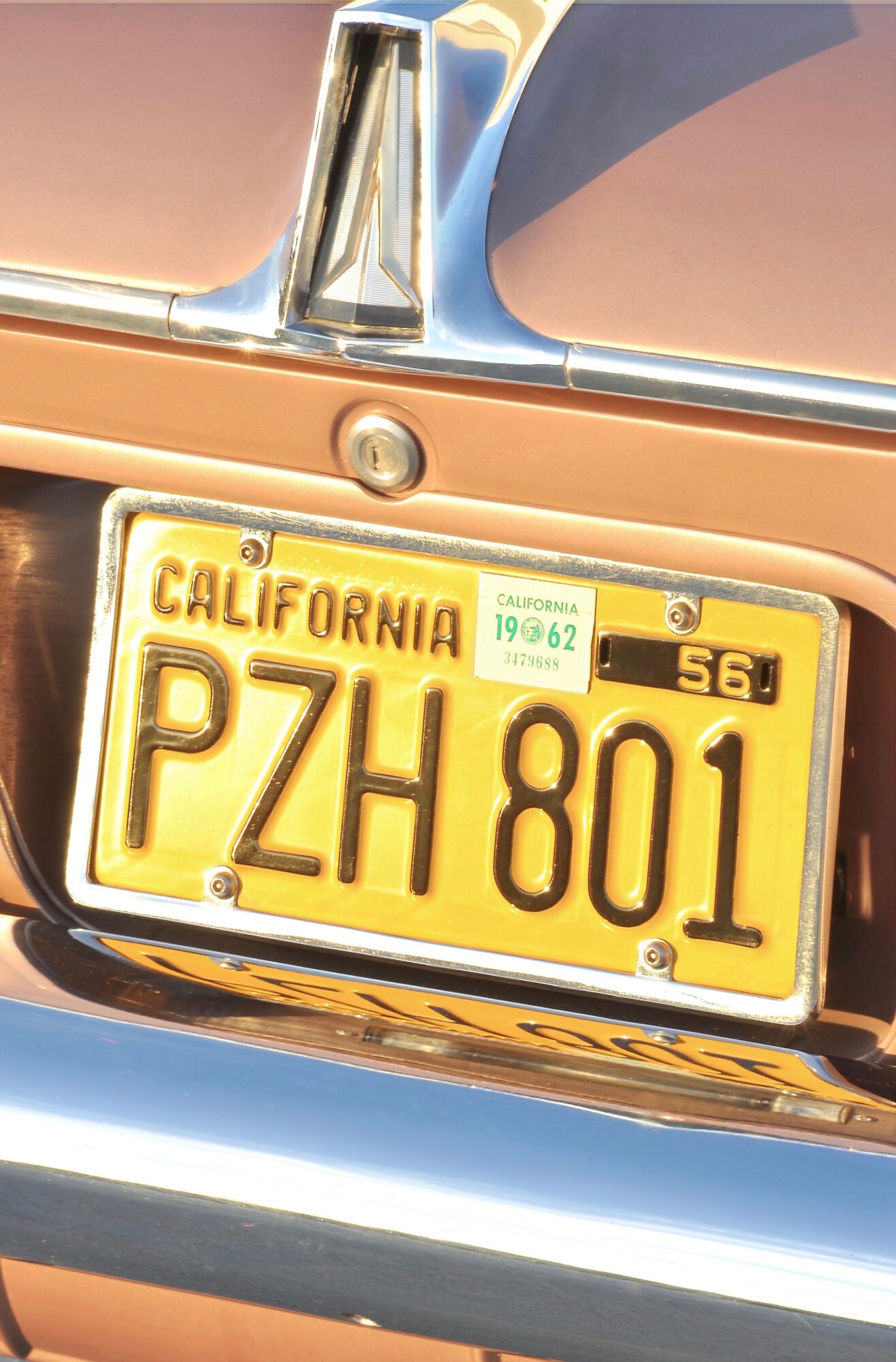
Because the car is now located in California, a set of correct-dated (1956 issue date plate with 1962 tag) were obtained and add local flavor to the car (which was originally from South Carolina). Authentic plate? Yes. Accurate going back to this car being purchased new? Nope.
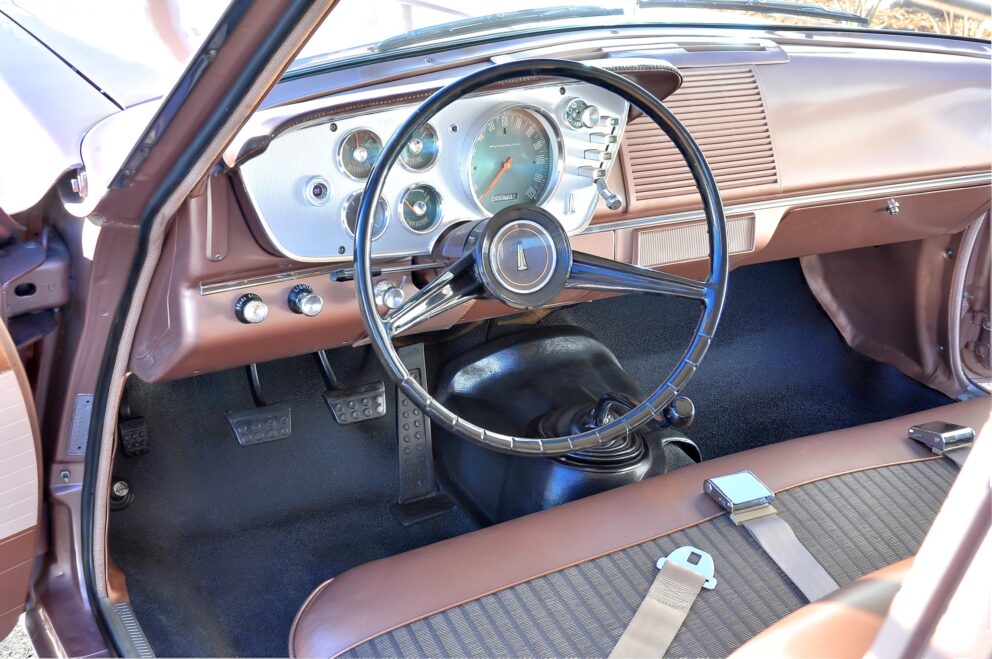
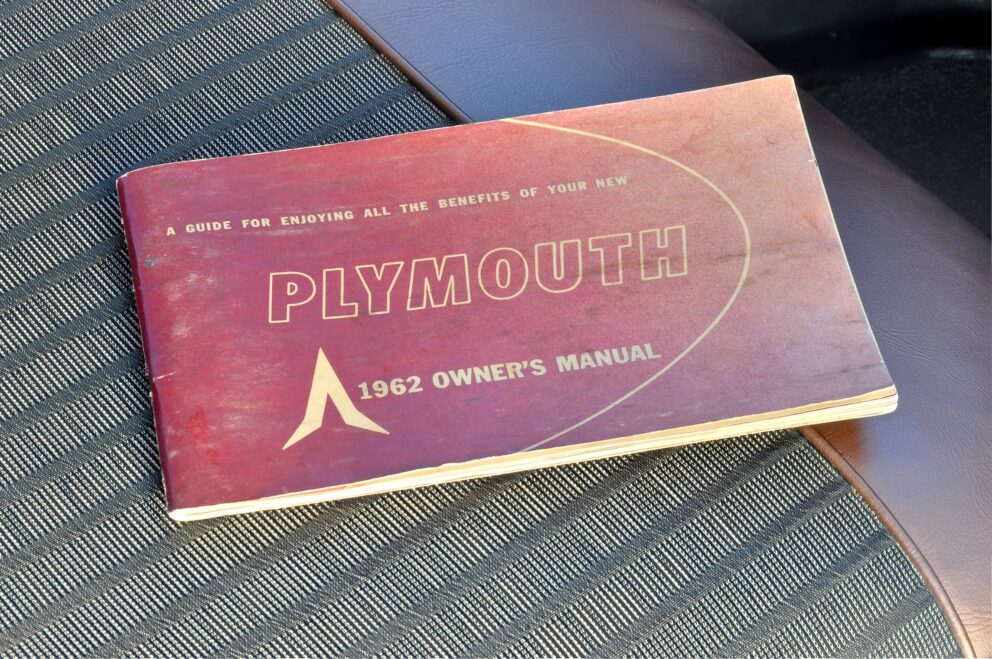
Note the automatic transmission push-button block-off plate located to the left of the instrument panel. This is a “no radio” as in radios were optional, and no radio was ordered. (As opposed to commonly called “radio delete”). In the glove box is the original 1962 owner’s manual, and small details like this helps add to the completeness of this rare “time capsule” Plymouth.
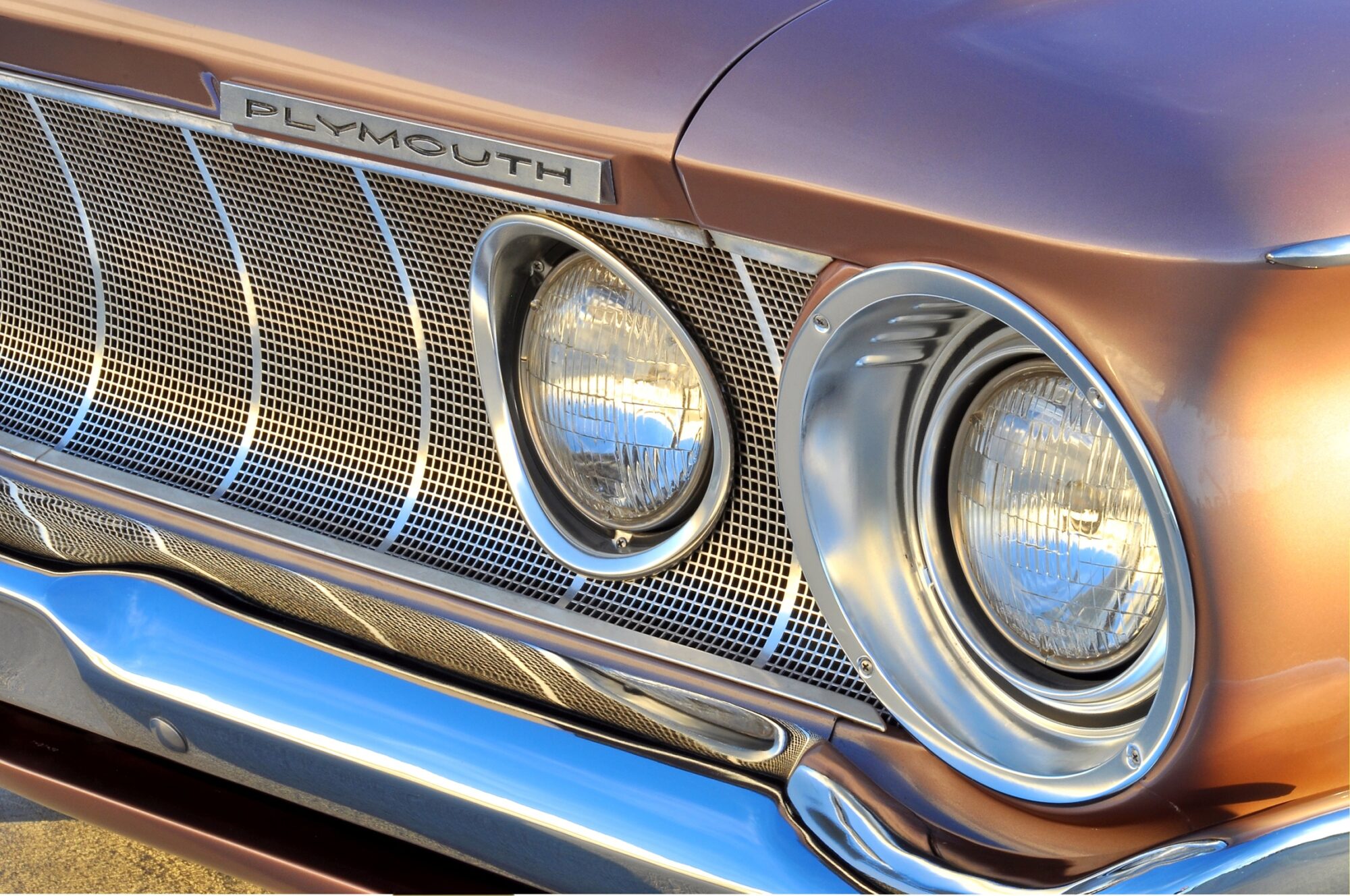
The 1962 Plymouth’s front end styling incorporated a concave fine-mesh grille with outer headlights (low beam) positioned in large round housings, while the high-beam headlights were inboard in location.
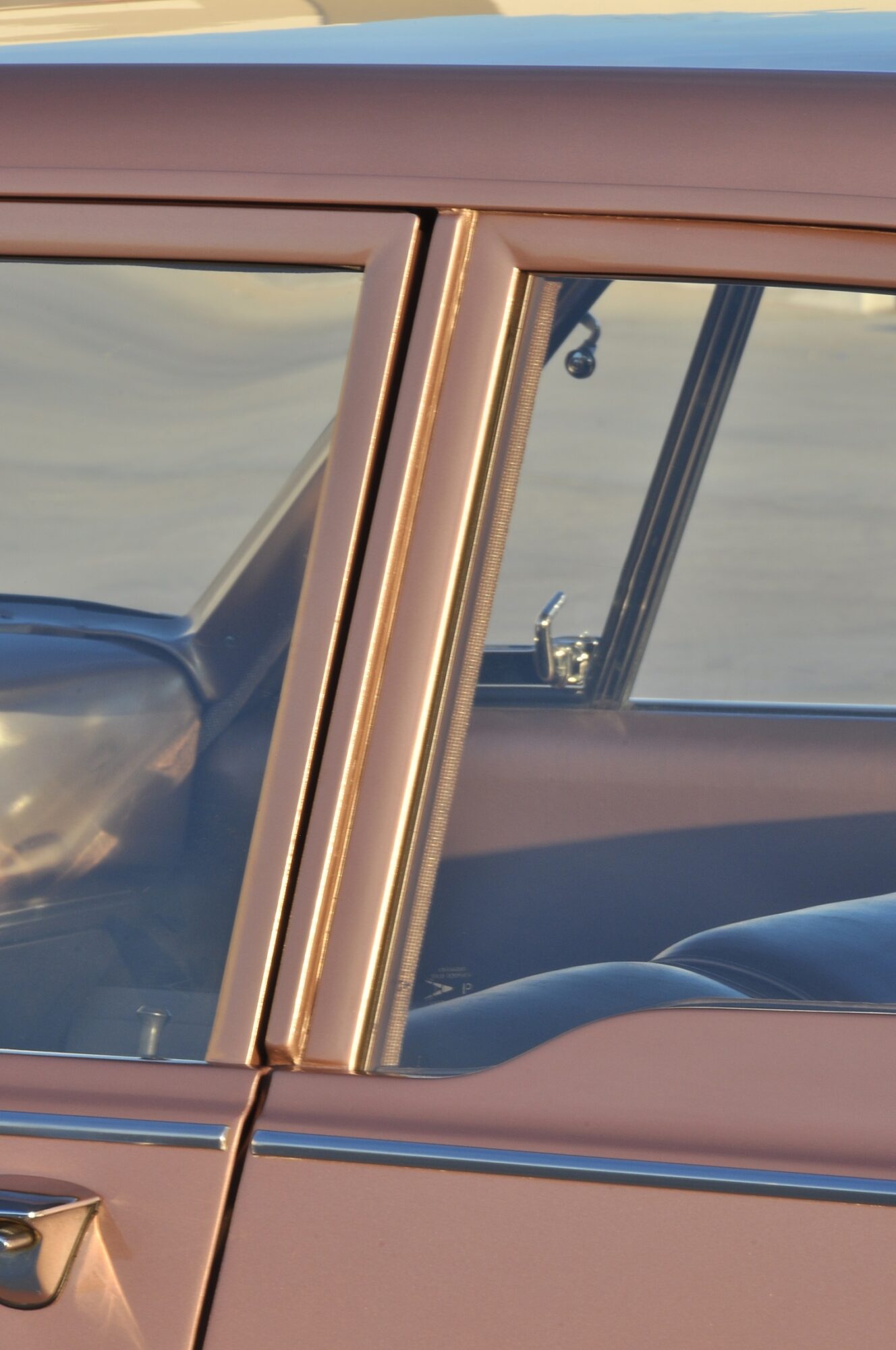
The standard 2-door sedan cars were known on the street as “post cars” and were favorites for drag racers.
CHICKEN COOP
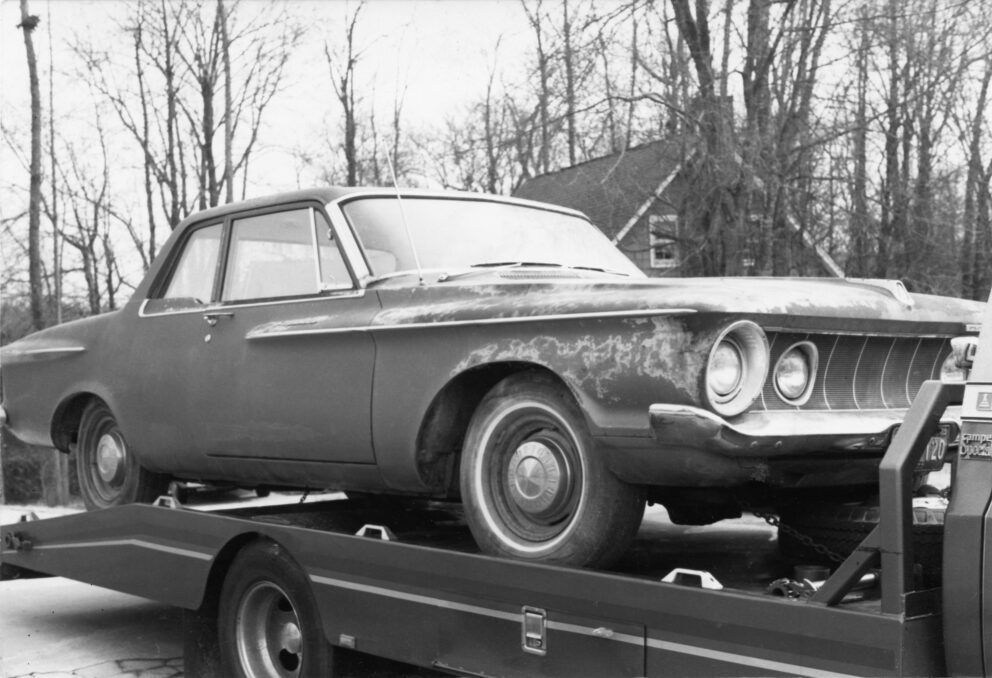
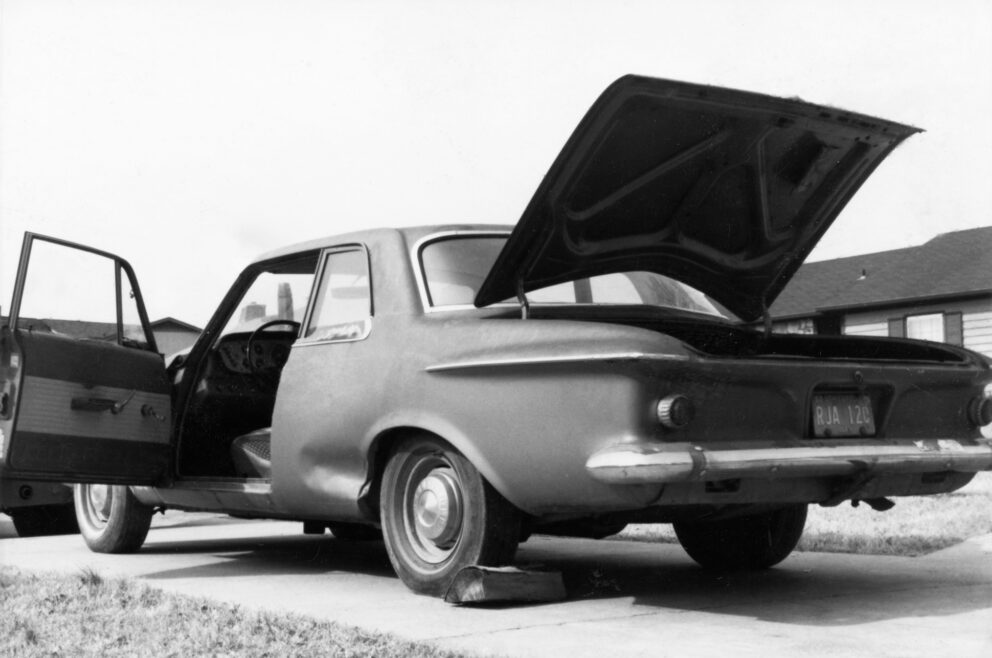
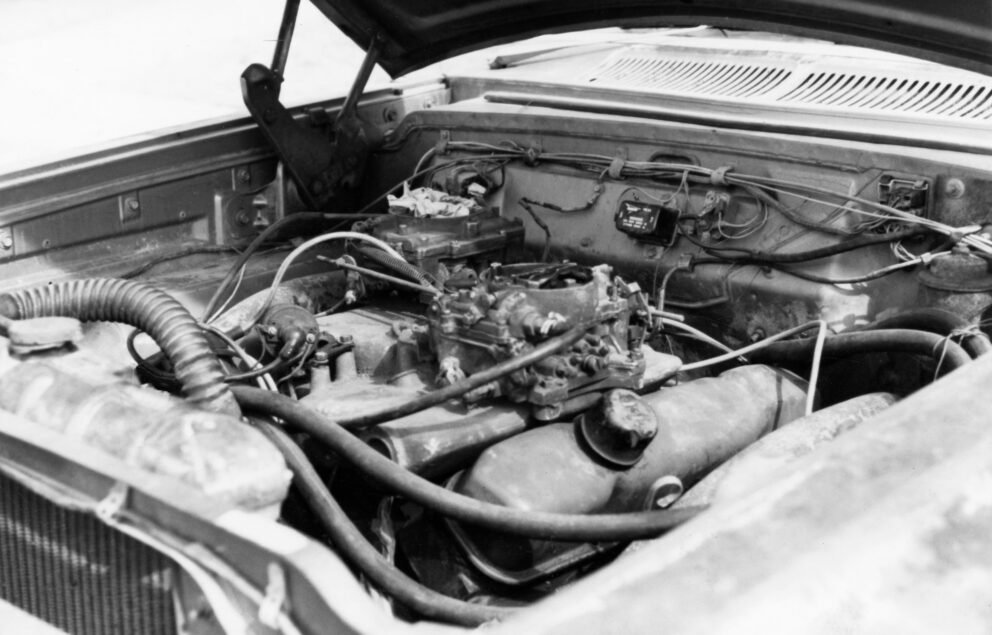
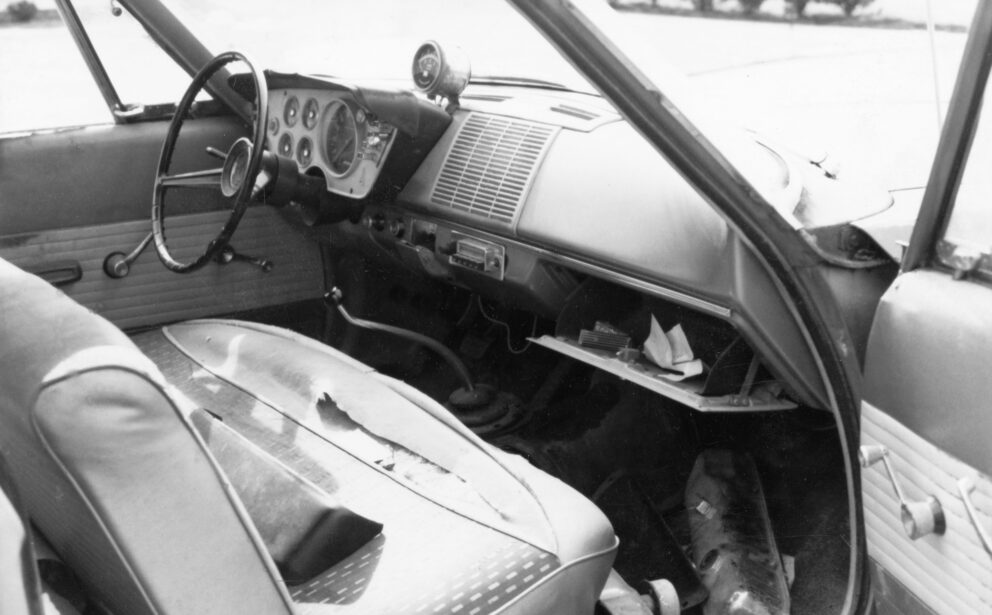
The pictured car is a factory 413 Maximum Performance Savoy model that came with the 3-speed manual transmission, a rare car that somehow survived all the years and was found in 1985 inside of a chicken coop in North Carolina. Luckily, the vehicle did not suffer from rust corrosion (typical of these era Chrysler Corporation cars) and was nearly all intact, save for a few small details.
Galen Govier, who’s considered an expert with these cars, had verified the VIN (the fourth digit “1” verifies a factory 413 Max Wedge car) and this car has been added to the Chrysler Registry. In recent years, the car was further refined in authenticity, going from about an 85-percent correct vehicle to where it is now, which is about as close to original May 1962 condition as is possible. Because it has few options (it wasn’t even equipped with a radio), this is one of the lightest of all the Max Wedge cars from 1962, with a shipping weight of 3,185 pounds.
Without question, the accidental downsizing of the line of 1962 Chrysler Corporation B-bodies turned out to be a sales disaster; however, history has shown that the move to smaller, lighter cars from the automaker greatly contributed to these cars becoming the hottest passenger car products in the domestic market. “Wolf in sheep’s clothing” is how these cars looked; however once the engine was fired up, it was very apparent that there was some serious horsepower under the hood. It truly was a silver lining to see the launch of the changing of the image of Dodges and Plymouths in the eyes of the youth market starting with these high-horsepower Maximum Performance vehicles.
Records show that a total of 190 1962 Plymouth Super Stock 413 cars were produced, and today there are only 23 of these specially built Maximum Performance 413 Plymouths with the manual transmission known to exist.
413 SUPER STOCK FACTS
- The engine block used on the Maximum Performance 413 engines were heavy-duty truck units (higher nickel content) with modifications done at the top of each cylinder bore, a notch for clearance of the larger-sized exhaust valve (1.88-inch diameter). The exhaust ports were 25-percent larger than a standard 413. These were “raised block” engines known as Chrysler RB powerplants, featuring a 4.19-inch bore, 3.75-inch stroke.
- The 413 Maximum Performance engines featured fully adjustable rocker arms (originally designed for Chrysler marine engines) along with double springs (flat wound outer spring). The 1962 engines had four bolts securing the valve covers, later these engines would have six-bolt valve covers.
- Spark came from a Prestolite double-breaker full centrifugal distributor (#IBB 4202).
- The design of the intake manifold provided for 15-inch-long runners that crisscrossed over the engine, with the twin four-barrels connected via a center-mounted pivoting linkage. These cars had heavy-duty 22-inch-wide radiators and low restriction water pumps.
- A pair of Carter AFB carburetors (aluminum four-barrel) model 3447-S were used, and were rated at 525-cfm (cubic feet per minute) capacity and used manual chokes.
- The factory went all-out in designing an exotic exhaust system for these cars. Three-inch head pipes were capped-off with four-bolt removable cut-outs, and a balance tube was incorporated in the system.
- The underside of the car was all business, from the engine came large-diameter three-inch pipes than ended at 45-degree angled exhausts, which were capped-off for street use. Two-inch exhaust pipes connect to New Yorker mufflers, and a balance tube was fitted to equalize back pressure.
- The Max Wedge 413 was an impressive performer, and fitted with 11.0:1 compression ratio (forged pistons), solid lifter performance camshaft, large-port cylinder heads, special cross-ram intake with twin Carter four-barrels, double-breaker distributor and huge exhaust manifolds, it delivered 410 horsepower @ 5,200 rpm, and 460 lbs-ft of torque at 4,400 rpm.
Author: James Maxwell
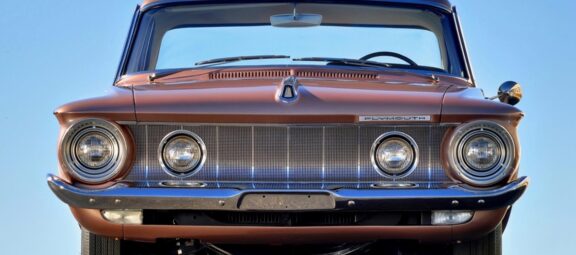
0 Comments